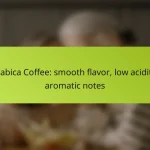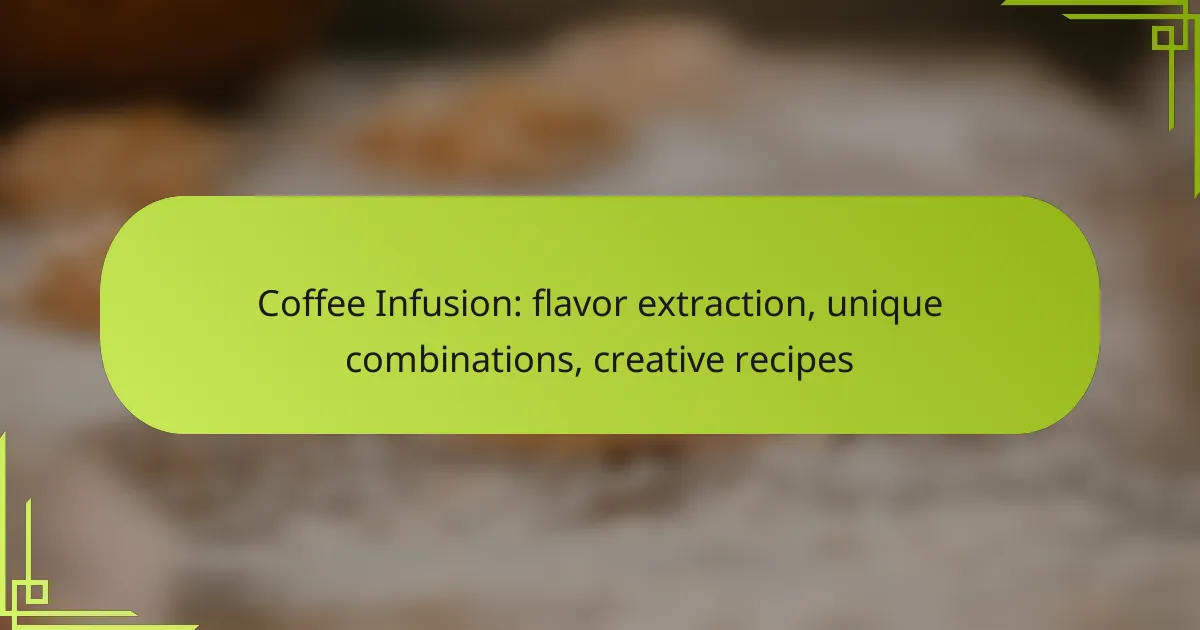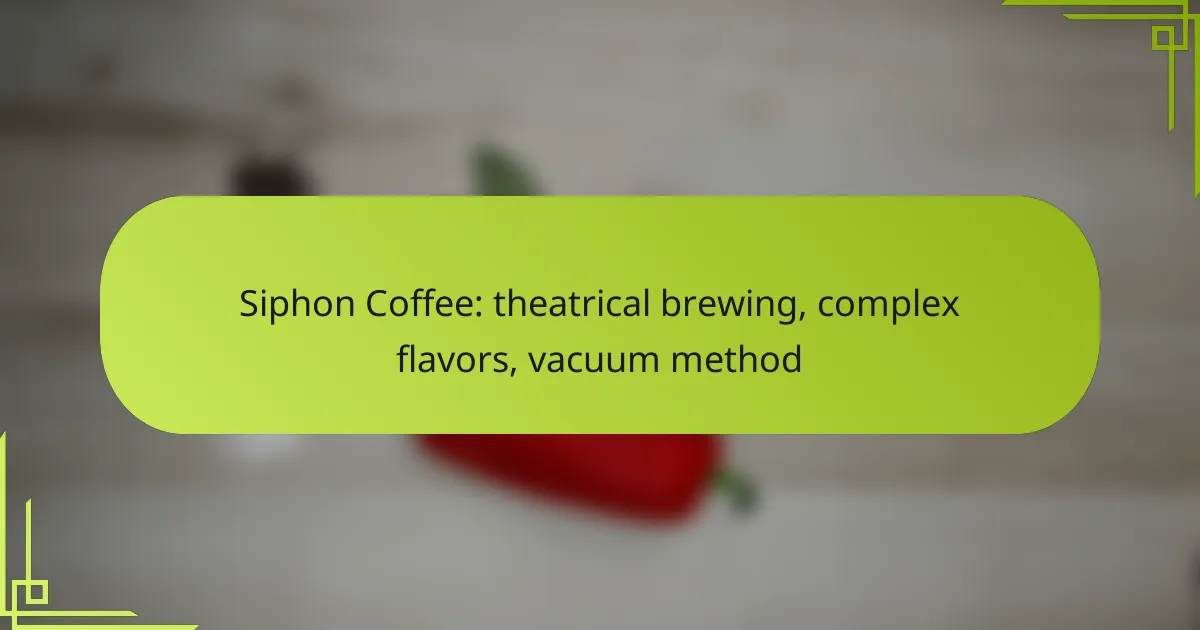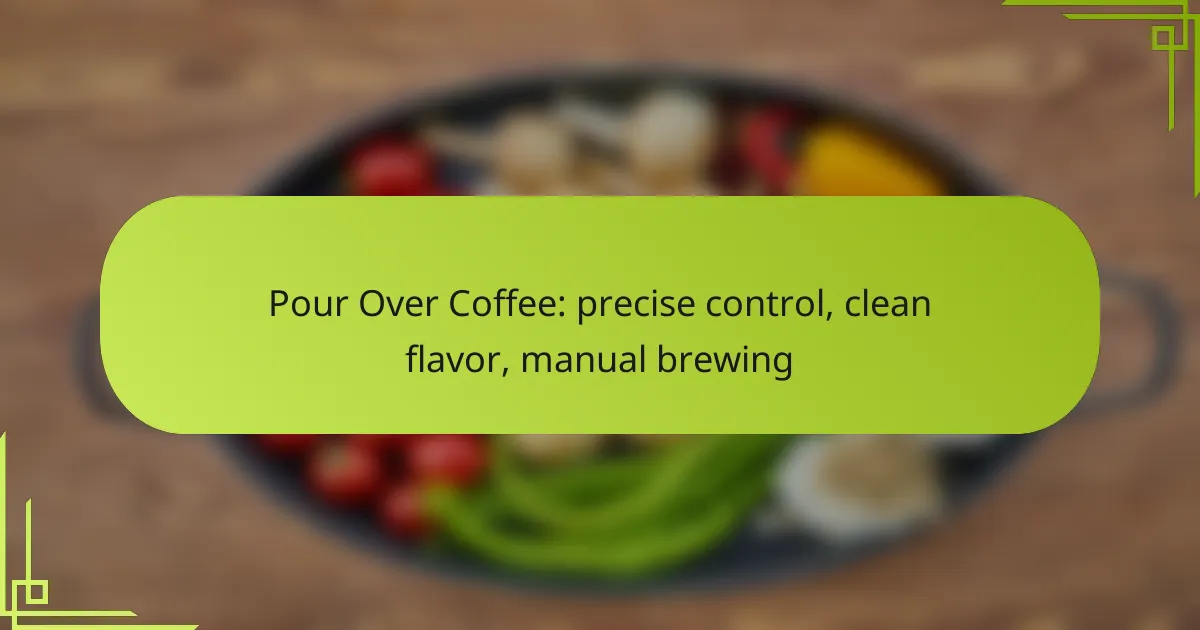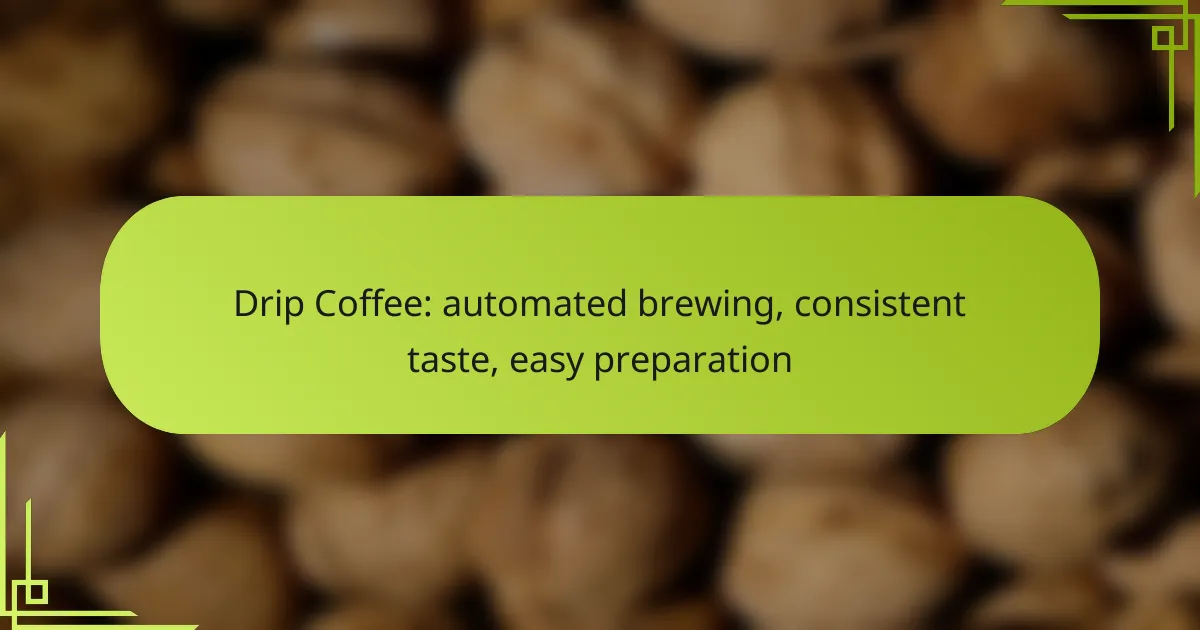Coffee infusion is an art that involves extracting rich flavors through various brewing methods, each offering a unique taste experience. By blending coffee with different ingredients, you can create distinctive flavor profiles that transform your daily cup into an exciting adventure. Explore creative recipes that elevate your brew and introduce new aromas, making each sip a delightful journey.

How to extract flavor from coffee infusions?
Extracting flavor from coffee infusions involves using various brewing methods that enhance the coffee’s natural taste. Each technique impacts the flavor profile differently, allowing for unique combinations and creative recipes.
Cold brew method
The cold brew method involves steeping coarsely ground coffee in cold water for an extended period, usually 12 to 24 hours. This process results in a smooth, less acidic coffee concentrate that can be diluted with water or milk.
To prepare cold brew, mix one part coffee to four parts water, then refrigerate the mixture. After steeping, strain the coffee through a fine mesh or coffee filter to remove the grounds. This method is ideal for warm weather and can be served over ice.
French press technique
The French press technique uses a plunger to separate coffee grounds from brewed coffee, allowing for a rich and full-bodied flavor extraction. Typically, a steeping time of four minutes is recommended for optimal results.
To brew, combine coarsely ground coffee with hot water in the French press at a ratio of about 1:15. After steeping, press the plunger down slowly to separate the grounds. This method captures the oils from the coffee, enhancing the overall flavor.
AeroPress extraction
The AeroPress extraction method is a versatile and portable brewing technique that uses air pressure to push hot water through coffee grounds. This results in a concentrated coffee similar to espresso in just a few minutes.
For AeroPress brewing, use a fine to medium grind and a coffee-to-water ratio of about 1:17. Add hot water, stir, and then press down the plunger steadily. Experimenting with brew time and grind size can yield different flavor profiles.
Pour-over infusion
The pour-over infusion method allows for precise control over the brewing process, resulting in a clean and bright cup of coffee. This technique involves pouring hot water over coffee grounds in a filter, allowing the water to extract flavors as it passes through.
Use a medium grind and a coffee-to-water ratio of approximately 1:16. Pour water in a circular motion to saturate the grounds evenly, and allow the coffee to drip into a carafe or cup. This method highlights the coffee’s unique characteristics and aromas.
Vacuum pot brewing
Vacuum pot brewing, also known as siphon brewing, creates coffee using vapor pressure and vacuum to extract flavors. This visually striking method produces a clean and aromatic cup, often favored by coffee enthusiasts.
To brew, fill the bottom chamber with water and the top chamber with coffee grounds at a ratio of about 1:15. Heat the water until it boils, causing it to move to the top chamber. Once the brewing is complete, remove the heat source, and the brewed coffee will return to the bottom chamber. This method requires attention to timing and temperature for the best flavor extraction.

What are unique coffee infusion combinations?
Unique coffee infusion combinations involve blending coffee with various ingredients to create distinctive flavors and aromas. These combinations can enhance the coffee experience by introducing new taste profiles, making each cup a unique adventure.
Coffee and citrus blends
Coffee and citrus blends combine the rich, bold flavors of coffee with the bright, refreshing notes of citrus fruits. Common pairings include orange, lemon, and grapefruit, which can be added as zest, juice, or even as a garnish. This combination works particularly well in cold brews or iced coffees, where the citrus can brighten the drink without overwhelming it.
To create a simple citrus coffee infusion, brew your coffee as usual and add a splash of fresh orange juice or a twist of lemon peel. Experiment with ratios to find the balance that suits your palate.
Herbal coffee infusions
Herbal coffee infusions incorporate various herbs to enhance the coffee’s flavor profile. Popular herbs include mint, rosemary, and lavender, which can add a refreshing or aromatic quality to the drink. These infusions can be made by steeping the herbs in hot water before adding coffee or by mixing dried herbs directly into the grounds.
For a mint-infused coffee, brew your coffee and stir in a few crushed mint leaves. This method can create a refreshing drink, especially when served iced. Be cautious with the amount of herb used, as strong flavors can easily overpower the coffee.
Spiced coffee recipes
Spiced coffee recipes introduce warmth and complexity through spices like cinnamon, nutmeg, and cardamom. These spices can be added during brewing or sprinkled on top of the finished drink. A popular choice is to add a cinnamon stick to the coffee grounds or brew with a pinch of nutmeg for a cozy flavor.
For a spiced coffee, try brewing your coffee with a teaspoon of ground cinnamon mixed into the grounds. This simple addition can transform your morning cup into a fragrant experience. Adjust the spice levels according to your taste preferences, as some spices can be quite potent.
Flavored coffee syrups
Flavored coffee syrups are concentrated sweeteners infused with various flavors, such as vanilla, caramel, or hazelnut. These syrups can be added to coffee to create a sweet and flavorful beverage. They are available commercially or can be made at home by simmering sugar with flavorings.
To make a basic vanilla syrup, combine equal parts sugar and water in a saucepan, add a vanilla bean or extract, and simmer until the sugar dissolves. Use this syrup to sweeten your coffee, starting with a small amount and adjusting to taste. Be mindful of the syrup’s sweetness, as it can quickly dominate the coffee’s natural flavors.

What creative coffee recipes can I try?
Exploring creative coffee recipes can elevate your daily brew into a delightful experience. Unique combinations of flavors can enhance the taste profile of coffee, making it more enjoyable and interesting.
Mocha coconut latte
The mocha coconut latte combines rich chocolate and creamy coconut for a tropical twist on the classic latte. Start by brewing a strong espresso or coffee, then mix in steamed milk, cocoa powder, and coconut syrup.
To enhance the flavor, top it with whipped cream and a sprinkle of toasted coconut flakes. This drink is perfect for those who enjoy a sweet and indulgent coffee experience.
Lavender vanilla coffee
Lavender vanilla coffee offers a soothing and aromatic experience, ideal for relaxation. Brew your coffee as usual, then add a splash of vanilla extract and a few drops of lavender syrup.
For a more pronounced flavor, consider using dried culinary lavender steeped in hot water before adding it to your coffee. This unique combination can be enjoyed hot or iced, making it versatile for any season.
Chili chocolate coffee
Chili chocolate coffee is a bold and spicy take on traditional coffee, perfect for adventurous palates. Begin by brewing your coffee, then mix in cocoa powder and a pinch of chili powder or cayenne pepper to taste.
For an extra kick, consider adding a dash of cinnamon. This recipe balances sweetness and heat, creating a complex flavor profile that can awaken your senses.
Maple pecan coffee
Maple pecan coffee combines the nutty flavor of pecans with the sweetness of maple syrup, creating a comforting beverage. Brew your coffee and stir in maple syrup along with pecan extract or crushed pecans for texture.
This recipe is particularly delightful during the fall months but can be enjoyed year-round. Garnish with whipped cream and a drizzle of maple syrup for an indulgent finish.

What criteria should I consider for coffee infusion?
When infusing coffee, key criteria include bean origin and roast level, water temperature and quality, and infusion time. Each factor significantly influences the flavor extraction and overall quality of the brew.
Bean origin and roast level
The origin of coffee beans affects their flavor profile, with beans from different regions offering distinct taste notes. For example, Ethiopian beans are often fruity and floral, while Brazilian beans tend to be nutty and chocolatey.
Roast level is equally important; lighter roasts preserve more acidity and complex flavors, whereas darker roasts provide a bolder, more robust taste. Experimenting with various origins and roast levels can lead to unique combinations that enhance your coffee experience.
Water temperature and quality
Water temperature plays a critical role in coffee infusion, with the ideal range typically between 90°C and 96°C (194°F to 205°F). Water that is too hot can lead to over-extraction, resulting in bitterness, while water that is too cool may under-extract, yielding a weak flavor.
The quality of water is also essential; using filtered water can eliminate impurities that affect taste. Hard water can lead to mineral buildup in your equipment, so aim for water with balanced mineral content for optimal flavor extraction.
Infusion time
Infusion time varies depending on the brewing method and desired strength. For instance, a French press typically requires about 4 minutes, while espresso extracts in just 25 to 30 seconds. Adjusting the infusion time can help you achieve the perfect balance of flavor and strength.
Be cautious of over-extraction, which can occur if coffee is left to brew too long, resulting in a bitter taste. Start with recommended times for your brewing method and tweak based on your taste preferences for the best results.

How to choose the right equipment for coffee infusion?
Selecting the right equipment for coffee infusion is crucial for achieving the desired flavor profile and extraction quality. Consider factors such as brewing method, capacity, and ease of use when making your choice.
Types of coffee infusion equipment
There are several types of coffee infusion equipment available, each offering unique brewing methods. Common options include drip coffee makers, French presses, pour-over devices, and espresso machines. Each type has its strengths, such as the convenience of a drip maker or the rich flavor produced by a French press.
When choosing, consider the flavor characteristics you prefer. For example, pour-over methods often yield a cleaner taste, while espresso machines can create intense, concentrated flavors. Understanding these differences will help you select the best equipment for your coffee preferences.
Key features to consider
When evaluating coffee infusion equipment, focus on features that enhance your brewing experience. Look for adjustable temperature settings, brew time controls, and the ability to customize grind size. These features can significantly impact flavor extraction and overall quality.
Additionally, consider the material of the equipment. Stainless steel and glass are popular choices for their durability and non-reactive properties. Ensure that the equipment is easy to clean, as maintenance plays a vital role in preserving the taste of your coffee.
Budget considerations
Your budget will influence your choice of coffee infusion equipment. Basic drip coffee makers can be found at lower price points, while high-end espresso machines may require a significant investment. Determine how much you are willing to spend and look for equipment that offers the best value within your budget.
Keep in mind that investing in quality equipment can lead to better coffee experiences over time. Consider the long-term benefits of durable, high-performing machines versus cheaper options that may need frequent replacement.
